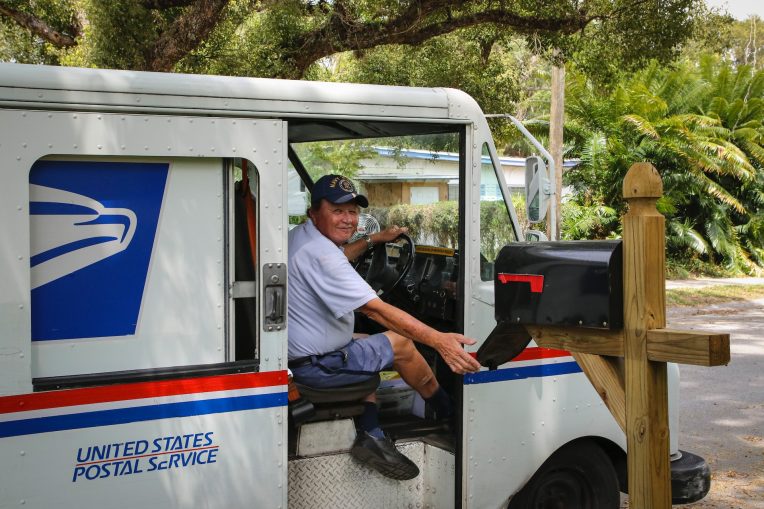
Whoever tried their hand at running a newsletter knows it takes a lot of work. Convincing users to subscribe is rather challenging, but it only takes one click for them to unsubscribe. This is why you shouldn’t rest on your laurels once you build a mailing list. It requires a lot of effort to provide subscribers with the kind of e-mail content that will keep them satisfied and won’t make them want to leave quickly. Let us present you with nine infallible topics your audience will love!
Why users unsubscribe from newsletters
Sharing is caring? Yes, but not if you overdo it. When running a newsletter, it’s crucial not to exaggerate the number of sent e-mails. It obviously depends on your niche and your target audience, but generally, people don’t like being overloaded with content. Even if you provide them with a great one – doing that too often might get them annoyed after some time. Another unwanted sensation it can bring to users is a sense of guilt. They may really want to read every e-mail you send them, but our lives are rather busy nowadays, and it’s not that simple to stay up-to-date with every single thing. A growing pile of unread newsletters can make them feel guilty about not fulfilling their commitments. And since no one actually likes that, it will highly increase the risk of them hitting the unsubscribe button.

Informing your newsletter subscribers about every newly published article is not necessarily the best idea. Your newsletter is not the right place for that – for such a purpose, it’s better to use, for example, social media channels. The main reason for that is the different purposes for which people create these accounts – social media mainly provide entertainment, while e-mail plays a more serious role in users’ lives.
What’s more, from a psychological point of view, having numerous unread notifications on social media platforms is less stressful than having dozens of unread e-mails. Why? Because of the awareness of what it might contain. Social media can notify you that it’s someone’s birthday, that the company you follow has just posted, that someone sent you a funny meme, or that you’ve been tagged in a family photo by your cousin. On the other hand, via e-mail, you may receive an invitation to your friend’s bachelor party, a newsletter from the website you enjoy, or an online purchase confirmation. However, it might as well be an electricity bill, a response to a job application, or a decision regarding your visa application process! These matters are much more significant and often require our immediate response.
What also matters is your newsletter’s title. Try to put yourself in a user’s situation – how fast will you move to trash an e-mail with no subject, one named “Newsletter” or (horror of horrors) “Test”? You probably wouldn’t even bother reading its content, would you? So don’t neglect it, and try to use words that would make you, if you were the receiver, open and read the whole message. To give it a quick example, if you want to share an article about AI growing capacities, its constantly evolving algorithms, and impact on the online world, while your target audience is people working in the IT industry, a catchy title for your newsletter could be “Will artificial intelligence take your job?”. Do you get how it works now?
You should create a content plan for all your publishing activities. Newsletter included! Having everything planned sufficiently long in advance will let you assess if what you’re about to send to your subscribers is appropriately distributed over time. Think well about which intervals might work best in your case, and plan your e-mail distribution accordingly. Now, in terms of what to write about, let us present some ideas for engaging newsletters and occasions on which it’s great to reach out to your audience.

Ideas for a newsletter
1. Industry news
Any time something big happens in your industry, it’s worth having your say on it and sharing it with your audience. Of course, it only works for really meaningful news, which might be interesting not only for you and other content creators potentially involved in it but also from your newsletter readers’ point of view. Whatever you choose to write about, make sure to do that promptly – news is news only till it’s still fresh!
2. Seasonal content
There are undoubtedly significant moments throughout the year specific to every industry. Still, there are also some that apply to almost all of them – like the end of a year, the “back to school” period, Christmas (or any other big holiday celebrated in the country of your interest). I’m sure you can name at least a few that would work just perfectly in your particular case. Each one of these is a great occasion to e-mail your audience!
3. Industry events
Is there something going on related to your industry? Let your newsletter subscribers know about it! Are you going to take part in that event – that’s even better! If you go as a simple participant, you can prepare a summary of what happened during that event to later share with your audience. But if you attend it as a speaker – well, you’ve hit the jackpot! It’ll show that you’re known and appreciated in the industry. A newsletter is also a great spot to brag a little about winning or being nominated for some industry-related award. Inevitably, it’ll strengthen your authority among the readers!

4. Recommendations
Your audience will surely like to benefit from your expertise and value your opinion. This is why they’d enjoy getting e-mails containing useful reviews, comparisons, and recommendations from you! Do you create content for the automotive industry? Compare the most efficient hybrid engines that hit the market recently. Do you write about sports-related matters? Prepare a list of the best-performing players of ongoing championships, and which matches they’ll play in are worth seeing. Think about what kind of recommendations you could prepare for your subscribers!
5. Good deals
These type of messages works best for e-commerce (a newsletter is a perfect place to inform your subscribers about new products appearing in your offer or sales going on in your shop). But it can work just as well for publishers who don’t sell anything! People tend to appreciate showing them various ways to save money or time – so, if possible, you can try to deliver exactly that. For example, if you run a travel blog, your readers will be delighted to find out that February and March are great months for organizing a trip to Rome (because the prices for flight tickets and accommodation are not as crazy as in the high season, and there are fewer tourists)! Think of such examples from topics of your interest!
6. Invitations
Don’t hesitate to invite your subscribers to any course or webinar you organize! It’ll not only promote your event and gain you more participants but will also show your proactivity. It will also present you as a specialist in your field since it’ll clearly demonstrate your ability to create knowledgeable and expert content.

7. Users’ opinions
It’s also great to share your client’s stories (like case studies) to encourage your newsletter’s subscribers to take a step ahead in interacting with you and actively benefit from what you have to offer. Of course, not every content creator provides users with an actual service or product, but don’t worry – it’s great to share your readers’ stories too! Think about testimonials or particularly nice comments someone wrote about your content (maybe one of your articles was extremely helpful for someone) and turn it into a newsletter message! Remember that (if possible) it would be nice to reach out to the comment’s author and ask for their permission to share it – they will definitely appreciate such a gesture, and it will make them feel honored to be your newsletter’s hero!
8. Affiliates
Let your subscribers know when you establish a collaboration with someone. And it doesn’t only work for big things! It can even be just one article of yours that was published elsewhere. Your readers might be familiar with the website on which your text came out, so it might be exciting for them! On the other hand, if it’s you who invited someone to write an article for your website, it shows that you care for your audience and look for ways to deliver excellent quality content to them. It’s certainly something they’d appreciate!
9. Interviews
Have you interviewed someone impactful for your industry? Great! And who might want to find out about it? Your newsletter’s subscribers! Such a thing could be an exquisite treat for people interested in the industry who might be intrigued by what the person you interviewed has to say on a given matter.

Whatever message you decide to send to your newsletter’s subscribers, remember that it’s an incomparable occasion to let them know you better. Try to use a friendly tone of voice and ensure it’s in line with your overall image. Keep in mind that your newsletter, even though it’s not entirely public, still requires paying attention to details and providing its receivers with pleasant content (both aesthetically and language-wise). It’s an essential part of establishing a good relationship with your users. If you want to work more on that, you can also learn how to improve user retention!

